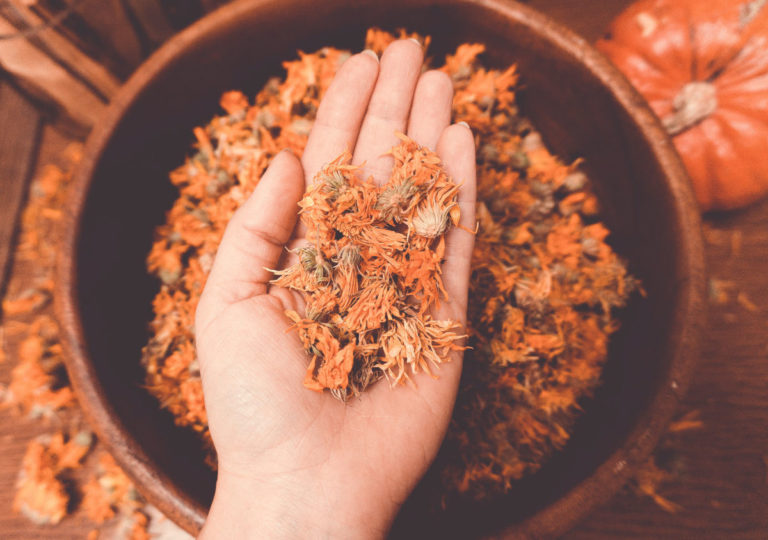8 Best Herbs for Pain Relief

The human body is very complex and needs to be taken care of in order to function properly. As we age, our body gradually loses its ability to heal itself as well as it once did. This can result in pain and other symptoms such as headaches, nausea, and more. There are ways you can improve your health and feel better than you have in years, by using herbs for pain relief.
Some herbs help aid the nervous system, amplify the immune system, or relieve depression, while others target inflammation or muscle soreness. To find out which herbs will be best for your specific needs, read below!
Herbs as a natural and powerful alternative for pain relief
Pain is a very common issue and for many, prescription medications have been the only option for relief. But, what if there were natural alternatives that could provide the same level of relief, without the harmful side effects?

How herbs can minimize pain
Some of the most effective and popular herbs used for this purpose include ginger, turmeric, and lavender; each one has its own unique set of properties that make it beneficial.
How to use the herbs
The two primary methods to use these herbs are through ingesting and through applying topically.
If you have a prescription, ensure that it’s not going to interfere with any medications, as these herbs have very powerful healing properties. As an example, one powerful benefit of some of the herbs is its blood de-clotting capabilities; it should therefore not be taken together with other anticoagulant or antiplatelet drugs.
Herbscan be made into teas, ground into powders, or consumed as foods or dietary supplements.
Herbs made as a topical solution usually come in the form of salves, oils, or balms. They are then absorbed transdermally, providing the desired effects. A topical application usually works best for pain caused by a skin or muscular area of the body, such as an aching back.
List the 8 best herbs for pain relief

White Willow Bark
White willow bark, which is made up of an aspirin-like chemical called salicin, has been used for millennia as a natural treatment for inflammation and pain. Taking willow bark regularly has been proven to be just as effective as pharmaceutical anti-inflammatory medications in relieving knee discomfort and musculoskeletal pain, for example.
Researchers believe that willow bark’s combination of substances makes it effective in treating headaches, reducing muscular pain, and reducing inflammation.
Risks associated with White Willow Bark
Using white willow bark for pain relief may potentially cause some stomach irritation for some. If you experience any discomfort when taking this natural medicine, discontinue its use. For some, there could also be small chances of symptoms such as nausea, vomiting, heartburn and diarrhea. Take white willow bark extract supplements with a meal or a glass of milk to help reduce any potential irritation.
Boswellia
Boswellia herb, made up of three different acids, has been used in India for hundreds of years. Modern science has also studied its anti-inflammatory benefits in relieving joint pain and muscular discomfort, such as osteoarthritis.
This therapeutic herb is most often taken orally in the form of a pill or supplement to relieve pain.
Devil’s Claw
Devil’s claw has been used traditionally in Canadian Aboriginal medicine for centuries as an anti-inflammatory and pain relief herb. It is derived from the plant Harpagophytum procumbens, which is native to South Africa and found in many parts of North America where it grows in the wild.
The plant produces two large black seeds on long stalks called claws; hence the name. This herb is known to help with back pain, arthritis and rheumatism. It also stimulates the immune system and acts as a diuretic, increasing urine production from the kidneys.
Bromelain
Bromelain is a natural enzyme found in pineapple that also has both pain relieving and anti-inflammatory properties, making it a popular choice as an alternative to over-the-counter pain medications. Bromelain can be taken in supplement form or used topically on the skin.
It has been known to help reduce prostaglandins, which are chemicals in the body which promote pain and inflammation. Bromelain is also powerful in speeding up tissue repair and healing.
Turmeric
Turmeric is a spice that has been used for centuries in India and in Asia for its medicinal properties. Curcumin, the active ingredient in turmeric, has been shown to have powerful anti-inflammatory and antioxidant properties.
A recent study published in the journal Phytotherapy Research showed that curcumin is effective in reducing pain and inflammation in people with osteoarthritis of the knee. The study participants were given 500 mg of curcumin twice daily for eight weeks. At the end of the study, they reported a significant reduction in pain and inflammation.
Curcumin is also a natural antihistamine and can be helpful for people with allergies. It can also help to improve liver function and lower cholesterol levels.
Ginger
Aside from the above-mentioned herbs, ginger has also shown its effectiveness for many ailments. The herb contains anti-inflammatory properties similar to those of anti-inflammatory drugs like ibuprofen, a COX-2 inhibitor celecoxib, and TNF blockers. It also reduces the production of pain-inducing hormones, making it a powerful pain reliever. It may be effective in treating autoimmune disorders and cancer, as well.
Ginger is related to turmeric and can be consumed as tea or in powder form. In studies, it has been found to be as effective as betamethasone, a steroid medication used for a number of diseases associated with pain. When consumed in a large amount, ginger has also proven as a natural treatment for nausea.
Capsaicin
Capsaicin is the pungent, fiery compound that makes chilli peppers hot. It is also a powerful pain reliever as it blocks pain signals produced by the body, and is used mainly in topical pain-relieving products.
Cat’s Claw
Cat’s Claw, also known as Uña de Gato in Spanish, is a medicinal plant that has been used by the Chilote people of Chile for hundreds of years. It is most often made into a herbal tea or tincture and taken orally. Cat’s Claw can be found in different parts of South America including Brazil, Peru, Bolivia and Ecuador.
The Cat’s Claw herb contains several chemicals which are believed to have relief properties such as harmane, harmine alkaloids (harmaline), quinolizidine alkaloids (quinoline) and polyphenols (tannins).
Cat’s Claw is most effective for the relief of inflammation, arthritis, and stomach ulcers.
Conclusion
Using herbs for pain relief is an age-old practice that is becoming more mainstream in the modern world for very good reasons.
There are many different herbs that can be used, and each one has its own unique healing properties. They can be used individually or in combination with other herbs to create a custom blend that best suits your needs.
If you are suffering from symptoms, these herbs for relief may be just what you need! They are natural, therapeutic, and won’t cause any side effects as prescription medications often do. If your current remedies are not helping you and you are looking for a more holistic approach, consider integrating these powerful herbal supplements instead.
References:
https://doi.org/10.3390%2Fpharmaceutics13020251
https://www.mountsinai.org/health-library/herb/willow-bark






